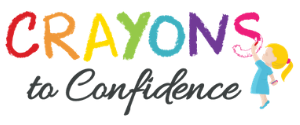Body Awareness Activities for Kids
Bodily awareness is super important for your kids. But it's probably important in more ways than you might think.
So what is bodily awareness, anyway?
Bodily awareness is just that; a personal awareness of your own body. It is the ability to recognize and control where your body is and how it moves.
This is especially important for kids because it serves as the foundation for their basic physical development. It helps them to develop their gross motor skills, and learn how to control their body in tight spaces, public settings, and in various settings (standing still, sitting in a chair, etc.).
And why is that so important?
The more aware a child becomes of their body, the more they are actively engaging their five senses to perceive the movements of their body.
This helps them form their multi-sensory processes. It develops their perception, posture, balance, coordination, and even relaxation.
When these skills are combined, it ultimately teaches kids self-control. It teaches them that they are the leader of their own actions and movements, and it teaches them how to use their body to calm down escalated emotions, trauma tendencies, stress, and anxiety.
Super cool, right?
So how can we develop bodily awareness more in our kids?
There are so many activities that maximize bodily awareness for kids.
Simon Says.
This is one of the easiest and most kid-friendly ways to increase bodily awareness in children.
It helps them form their basic anatomy, and actively engages their muscles, joints, and neural processes in basic movements.
Yoga.
You might not think of this as a kid-friendly activity. And the traditional yoga classes are, in fact, a little too advanced for young children.
But several yoga studios are now introducing classes for young children, and several apps, websites, and programs are bringing this skill right into your living room or your child's classroom!
Dancing.
Have you ever thought about the sheer number of muscles and movements you use when you are dancing?
Because it's nearly all of them.
The more body parts an activity exercises, the more bodily awareness is being fostered. This makes dance (classes or freestyle) the perfect bodily awareness activity for kids.
Stretching.
Not quite sold on dance and yoga classes for your kid?
That's okay. Basic stretching will do the trick just fine.It increases their flexibility and still allows them to reap all the benefits of other body awareness activities.
Breathing.
You might not think of breathing as a type of bodily awareness, especially since the body is barely even moving when we do it.
But practicing breathing patterns slowly and intentionally not only increases bodily awareness for kids, but also increases their mindfulness as well. Two birds, one stone.
I even use the breathing app on my Apple Watch to do breathing exercises with my kids each hour.
Meditating.
I always recommend kids (and adults) start with breathing alone, but they're usually ready to move onto meditation pretty quickly.
Kids (hopefully) have not had as much time to become overstimulated by today's society and typically catch on to meditation faster than the adults who struggle to do it with them.
Encourage your child to sit still, focus on their breathing, and close their eyes to draw attention to the sounds and scents in the room.
If this is too difficult, multiple apps are available to guide you in your meditation. Calm is my personal favorite, but Headspace is a close second. And there are several more.
So what are you waiting for?
The faster you get started with bodily awareness, the faster your kid will reap the benefits. And if nothing else, it provides a great opportunity to spend time with your kid.What more could you ask for?
